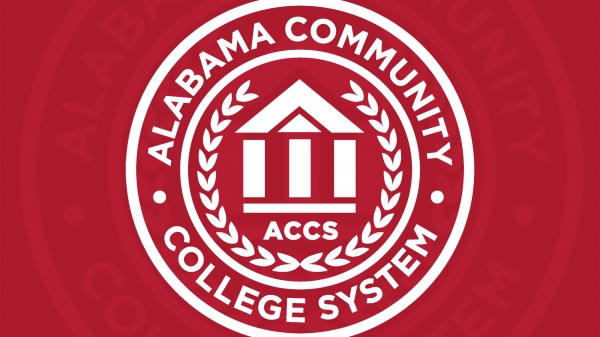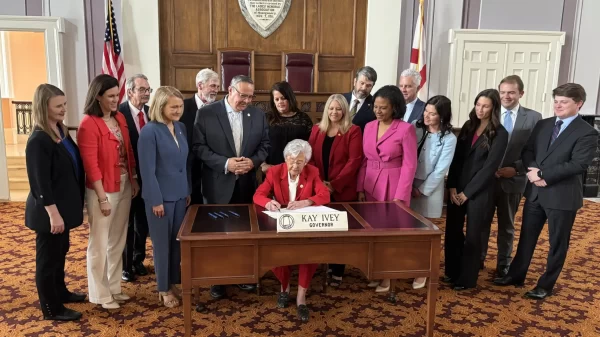By Dr. Jim Purcell
It wasn’t so long ago that a young person in Alabama could stake their claim as a middle-class citizen based upon a strong back, perseverance and the intensity of their work ethic. However, technology, automation and complex machinery have eliminated many of the jobs that required repetitious activity and pure human muscle.
Overall, this change in the nature of the workplace has yielded many positive things, such as less workplace injuries, greater quality products, and lower prices for consumers. Consequently, it does force us, as a society, to rethink how we educate our youth and how we retrain our existing workforce for the modern economy. The workplace for our children will be vastly different than previous generations.
In 1970, 74 percent of the middle class had a high school diploma or less education. A generation later, 61 percent of middle class workers have some level of postsecondary education. This shift has been more profoundly felt in Alabama for those that work, or had worked, in jobs connected to agriculture, natural resources, and manufacturing. A generation ago 80 percent of these industries employed persons without any educational requirements beyond high school. Today, nearly 60 percent of the employees in these industries are persons credentialed with an associate degree or higher. A 2017 report by the Center on Education and the Workforce found that the current recovery has further eroded job opportunities for individuals with only a high school diploma.
If we educate and credential Alabamians for the modern economy, Alabama will prosper. If not, the jobs and our grandkids will be migrating elsewhere. While Alabama’s current unemployment rate is the lowest it has been in more than a decade, there are many more jobs available that require postsecondary credentialed workers. Alabama employers are having to recruit outside the state for these high-paying jobs. The latest census data show that Alabama has more credentialed persons coming into the state to work than are leaving. That is a positive sign for Alabama’s overall economy, but if we want Alabamians to have the American Dream, we need to provide them access to the college majors that lead to 21st century careers.
In many ways, Alabama has unilaterally disengaged and disarmed its ability to build a modern workforce. Since 2007 state support for K-12 has been reduced by 13% and higher education by 33%. Those reductions compare to a 28% increase in college tuition. The state need-based aid program is the fourth lowest in the nation. A strategic state plan for education is essential in addressing these funding issues – restore funding to pre-2007 levels and increase state financial aid to students.
Surrounding states not only have higher need-based aid, but they have established merit-based scholarships for high school graduates ready to enter college. Arkansas, Oklahoma, Louisiana, Tennessee and Georgia all have robust scholarship programs.
But, Alabama has another task at hand – dealing with an aging population and geographic concentrations of unskilled workers in specific communities. Gallaway’s study of the United States economy (The Impact of Transfer Payments on Economic Growth, 2002) revealed a significantly negative effect of income transfer payments on per capita economic growth.
As more and more of the citizenry of a community receives their income from social security, pensions, and governmental transfer payments, the community becomes more vulnerable to dramatic economic decline. Rural development advocates stress that when 40% of a community’s income is from these non-work sources, aggressive action must be taken to adjust the fundamentals of their economy or we risk falling into an economic and social abyss. More than half of Alabama counties meet this 40% threshold.
This leads to a two-fold challenge. One is to optimize the success of communities that already are engaged in the modern economy with sustainable results. The other is to assist economically-challenged counties and communities in establishing a workable plan for new economic realities.
There are plenty of successful regional/community economies across the country. The key to their success is the continued willingness to invest in human capital by developing the talents of its citizenry.
You must only look at the history of our country to see how education helped returning WWII veterans get back into the workforce. An annual $1.9 billion investment in education was made at the end of WWII to help establish the “greatest generation.”
Contact your lawmakers and encourage them to show their support for education in next year’s legislative session, and make it one of your own 2018 resolutions to get engaged with building your community.
Alabama’s future is dependent on the involvement of every citizen. Possibly, Alabama’s greatest generation is at the schoolhouse door waiting for the opportunity to propel Alabama into the global economy.




















































